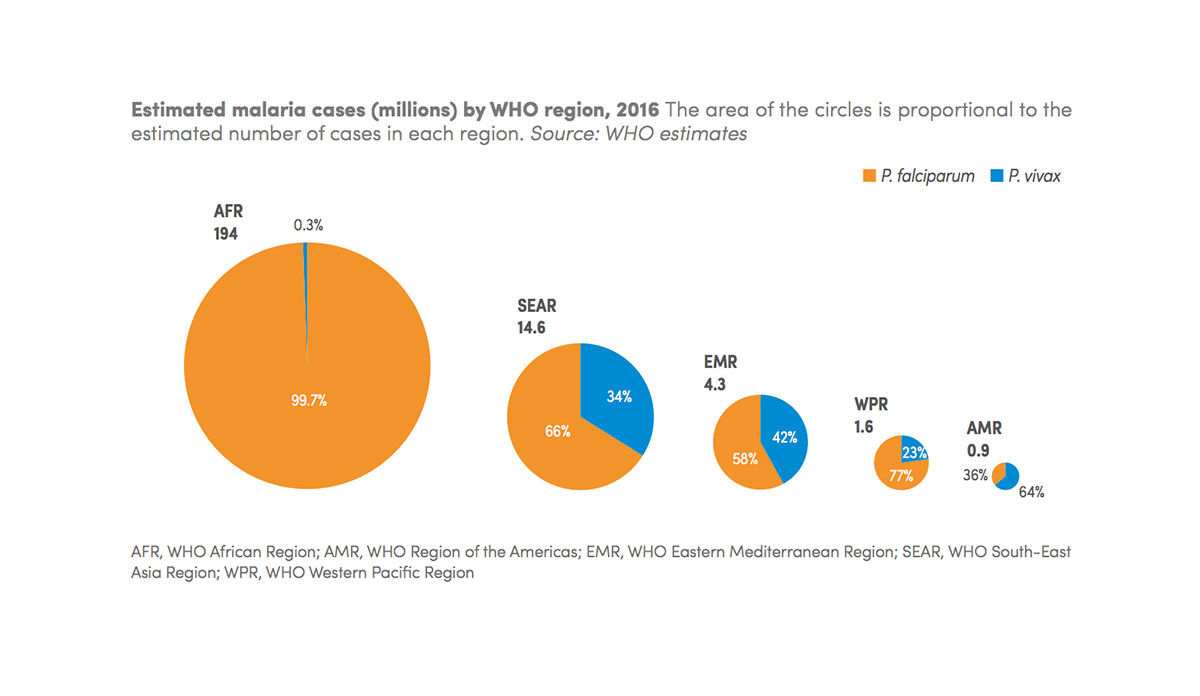This figure comes from the World Health Organization’s (WHO) 2017 World Malaria Report. It shows the breakdown in percentage of the type of malaria cases in each region (Plasmodium falciparum vs. Plasmodium vivax). The figure is striking for two reasons. First, it shows that Africa carries a larger burden of malaria than all other regions of the world combined. Second, almost all cases in Africa are caused by the most dangerous type of malaria parasite, P. falciparum, which can be fatal if treatment is delayed. By contrast, malaria caused by P. vivax is rarely life threatening.
The report emphasizes that the best form of malaria prevention is avoiding mosquito bites through use of bed nets and indoor insecticide spraying. WHO data shows a decrease of malaria incidence rates by 50% and a reduction of malaria mortality by 55% when these strategies are properly utilized. IRS (indoor residual spraying) use has been linked to reductions in maternal anemia, low birth weight, and perinatal mortality.
Both strategies are often more challenging than they might initially sound. Insecticide-treated nets must be hung appropriately above every bed in every house. They must be retreated every 1-5 years or replaced when damaged. And all members of the family must sleep consistently sleep under them. Indoor spraying needs to be done once or twice a year with chemicals known to kill mosquitos in that region. For these and other reasons, malaria remains a primary cause of death for children under age five.
Databyte via World Malaria Report 2017. World Health Organization.













